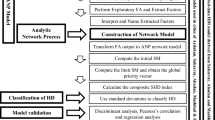Abstract
Housing is often considered a crucial element in determining the level of income and social well-being, in recognition of the ways in which housing shortages, or the use of poor-quality housing, are statistically linked to income levels and can negatively affect on people’s well-being (Rolfe et alii, 2020). So, planning social housing isn’t just a question of houses, but it claims for a deep understanding of people living conditions, social and economic dynamics. That’s why is necessary to integrate different statistical data to develop a model of social and economic living conditions of people to address better and context-based housing policies. The paper analyses methods and tools to integrate appropriate statistical data to guide housing policies in the case of the city of Taranto, selecting those most useful for determining supply and demand to guide urban planning in subsequent participatory and implementation paths. Planning social housing not just to improve physical spaces, but to interpret the needs of living.
The contribution is the result of joint reflections by the authors, with the following contributions attributed to F. Rotondo (paragraphs 1 and 4) and to P. Perchinunno (paragraphs 2 and 3).
Access this chapter
Tax calculation will be finalised at checkout
Purchases are for personal use only
Similar content being viewed by others
Notes
- 1.
ISTAT, 2011, Censimento Popolazioni e abitazioni (www.istat.it). ISTAT is the Italian Institute of Statistics.
- 2.
Index 1 - Incidence of the elderly population: population aged over 70 compared to the total population.
Index 2 - Incidence of the population by educational qualification: population with a qualification below middle school compared to the total population.
Index 3 - Incidence of the illiterate population: illiterate population compared to the total population.
Index 4 - Incidence of empty houses: number of empty houses compared to the total number of houses.
Index 5 - Incidence of period buildings: number of buildings built before 1960 compared to the total number of buildings.
Index 6 - Incidence of residential buildings with poor or poor state of conservation: number of buildings with poor or mediocre state of conservation compared to the total number of buildings.
References
Palvarini, P.: Qualità abitativa e vivibilità urbana. Quaderni di Sociologia, p. 52 (2010). http://journals.openedition.org/qds/719. Accessed 30 Nov 2015, 30 July 2021
Ferri, G., Pogliani, L., Rizzica, C.: Towards a collaborative way of living – innovating social and affordable housing in Italy. In: Van Bortel, G., Gruis, V., Nieuwenhuijzen, J., Pluijmers, B. (eds.) Affordable Housing Governance and Finance, pp. 59–86. Routledge, Oxford (2018)
Cerioli, A., Zani, S.: A fuzzy approach to the measurement of poverty. In: Dugum, C., Zenga, M. (eds.) Income and Wealth Distribution, Inequality and Poverty, pp. 272–284. Springer, Berlin (1990). https://doi.org/10.1007/978-3-642-84250-4_18
Cheli, B., Lemmi, A.: A “totally” fuzzy and relative approach to the multidimensional analysis of poverty, economic notes (1995)
Lemmi, A., Pannuzi, N., Mazzolli, B., Cheli, B., Betti, G.: Misure di povertà multidimensionali e relative: il caso dell’Italia nella prima metà degli anni ’90. In: Quintano, C. (ed.) Scritti di Statistica Economica, 3, Istituto di Statistica e Matematica, Istituto Universitario Navale di Napoli, Quaderni di Discussione, vol. 13, pp. 263–319. Curto, Napoli (1997)
Kulldorff, M., Nagarwalla, N.: Spatial disease clusters: detection and inference. Stat. Med. 14, 799–810 (1995)
Takahashi, K., Yokoyama, T., Tango, T.: FleXScan: software for the flexible spatial scan statistic. National Institute of Public Health, Tokyo (2004)
Patil, G.P., Taillie, C.: Upper level set scan statistic for detecting arbitrarily shaped hotspots. Environ. Ecol. Stat. 11, 183–197 (2004)
Aldstadt, J., Getis, A.: Using AMOEBA to create spatial weights matrix and identify spatial clusters. Geogr. Anal. 38, 327–343 (2006)
Camarda, D., Rotondo, F., Selicato, F.: Strategies for dealing with urban shrinkage: issues and scenarios in Taranto. Eur. Plan. Stud. 23(1), 126–146 (2015)
Author information
Authors and Affiliations
Corresponding author
Editor information
Editors and Affiliations
Rights and permissions
Copyright information
© 2021 Springer Nature Switzerland AG
About this paper
Cite this paper
Perchinunno, P., Rotondo, F. (2021). Integrated Statistical Data for Planning Social Housing in the City of Taranto. In: Gervasi, O., et al. Computational Science and Its Applications – ICCSA 2021. ICCSA 2021. Lecture Notes in Computer Science(), vol 12954. Springer, Cham. https://doi.org/10.1007/978-3-030-86979-3_11
Download citation
DOI: https://doi.org/10.1007/978-3-030-86979-3_11
Published:
Publisher Name: Springer, Cham
Print ISBN: 978-3-030-86978-6
Online ISBN: 978-3-030-86979-3
eBook Packages: Computer ScienceComputer Science (R0)




